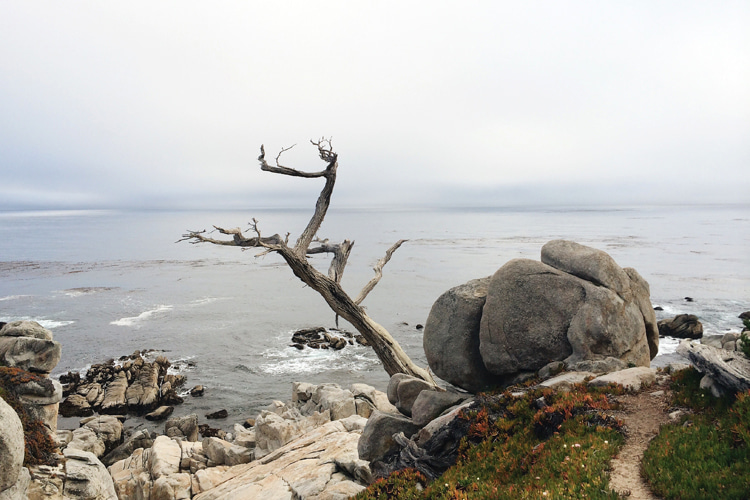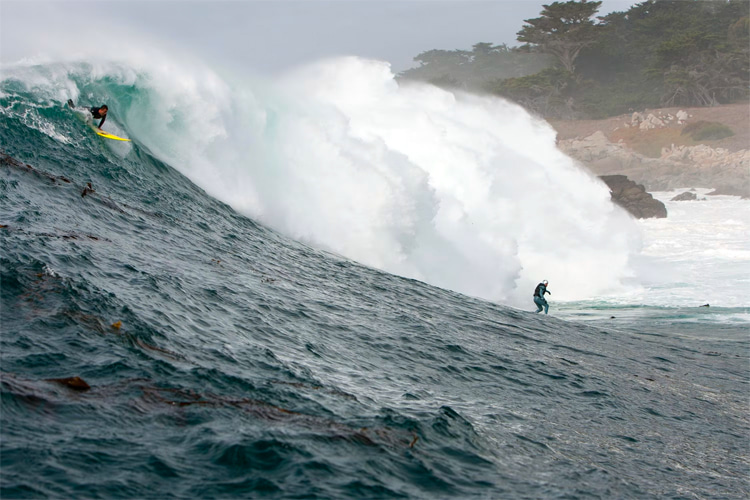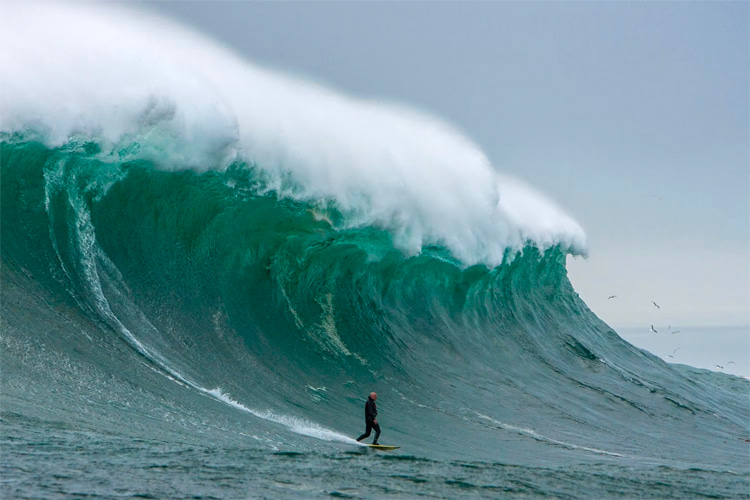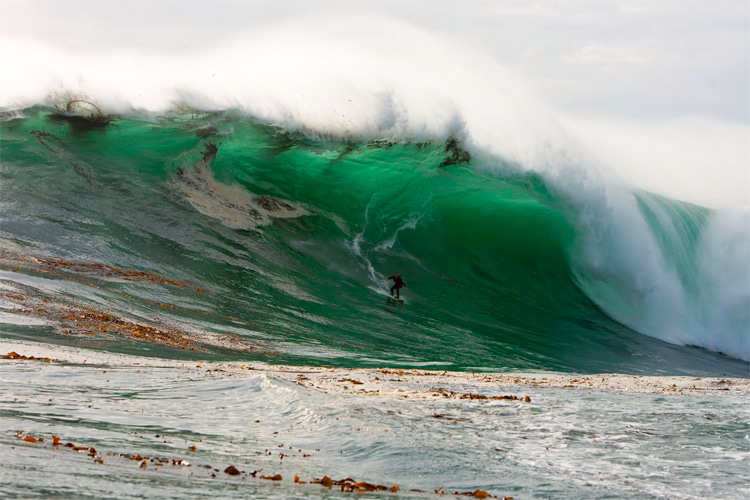In the surfing world, Ghost Tree is an iconic - and cursed - wave ridden in the mid-2000s until it was declared inaccessible.
It was once hailed as the next big thing in extreme surfing until a series of events and federal decisions kept riders out of the water.
Ghost Tree is a surf break located in Pebble Beach, California, just outside the 18th hole of Pebble Beach Golf Links in the Monterey Peninsula.
The name of the spot was given by local surfers.
It derives from the white and gnarly local cypress trees in the area and, in particular, from a spooky tree where the ghostly figure of a former land owner, Dona Maria - "The Lady in Lace" - has been spotted on dark foggy nights.
The truth is that Ghost Tree's mythical aura resulted in tragic consequences and became one of the few waves in the world to claim a surfer's life.
The pioneers of big wave surfing in this Central California right-hand avalanche never approved its mainstream nickname.
They prefer to call it Pescadero Point.

The First Rides
The story of Ghost Tree goes back to the early 1960s when Fred Van Dyke adventured himself into Ghost Tree and bodysurfed it.
In the following decades, surfers explored the surroundings, studied the optimal riding conditions, and gave it a go.
However, most of them felt the wave was too fast and broke too close to the Monterey Peninsula's coastal rocky formations.
Everything changed in the 2000s with the advent of motorized personal watercraft (PwC) and tow surfing - surfers could catch any wave they wanted while backed up by water safety teams.
"I watch golf, and the Pebble Beach Pro-Am goes on all the time, and it's right along the ocean," recalls big wave surfer Peter Mel.
"As a surfer, anytime you see a wave, you're like, 'Is that a wave?' So I remember distinctly watching it.
"It was a nice, beautiful day. There was some swell running, and I saw these rights peeling off the point in the background."
"Sure enough, in one of our first times there, we got to tow it for the first time."
Mel was not alone at Ghost Tree. He was with Adam Repogle.
"We did learn a lot in that first session. I'm glad we didn't show up on a day when it was really doing it because we wouldn't have had any idea what to expect," notes Repogle.
"It was definitely pumping, but it was small in relation to what was to come."
"After the word got out that Peter and I had surfed it, many guys from down there said it had been surfed before - guys have paddled into that wave."

Tow-In and Death
At the time, everyone knew that on the biggest days, there was no way people would paddle in.
And so it became a tow-in 50-foot-plus cult wave. The big wave surfing community had a new sanctuary in the heart of the California coast.
For three years - 2005, 2006, and 2007 - powerful west groundswells blessed Pescadero Point with humungous waves.
On December 4, 2007, the surf break claimed a human life during a long-period XXL swell.
"I tried jumping off the rocks off the back side, and I grabbed this kind of tree and slid down the cliff, but it broke, fell, and crashed," explains Anthony Tashnick.
"I got washed on the rocks, blown out, and paddled out around."
"Then, I saw Peter Davi. I went up and asked him where I should sit and if it was cool to paddle there. And he was like, 'Oh, yeah!'"
"He pulled a tow board and gave me the best introduction to the whole area. He was so passionate. He said, 'It's not called Ghost Tree! It's called Pescadero Point!'"
"He told me how much the area meant to him and basically guided me into a wave. I got one wave, I was on my feet in the air, and it felt forever."
"I got bounced off, got pounded, and then washed up. I ran to my car, and that was the last time I saw Pete."
Longtime local Peter Davi (1962-2007) had drowned at his dear Pescadero Point.

Pescadero Point: Protected and Inaccessible
The tragic episode triggered a cold war between the surfing community and the National Oceanic and Atmospheric Administration (NOAA).
NOAA is the federal agency that manages American marine sanctuaries. The problem was that PwCs were a threat to the protection of wildlife.
They were launching at Monterey Harbor, traveling 11 miles around the Monterey Peninsula and through six protected marine areas before getting to the infamous surf break.
Ultimately, NOAA decided that big wave surfing at Ghost Tree and environmental protection were incompatible.
An exception - with specific rules - took effect 100 miles north at Half Moon Bay's Mavericks in March 2009.
In December, January, and February, surfers could get tow-in assist and jet ski rescue when a high surf warning was in effect.
As a result, the focus and attention shifted from Central to Northern California, and Mavericks regained the status of a cult wave.
The Rebirth of Paddle-In
The good thing about the jet ski regulation was that a growing number of surfers started returning to the sport's essence and replacing motors with arm power.
In reality, there were new grounds to be conquered and new heights to be climbed by taking paddle-in to taller and taller waves.
Rather quickly, Mavericks took over the big wave surfing scene in California, and Ghost Tree succumbed to its raw nature and fell off the map.
"If you were to charge a place like that on the biggest days, you'd be doing it solely on your own, concluded Mel.
"So anybody charging it big now is taking a huge risk. We don't have the safety mechanisms you have at other places in the world."
The myth of Pescadero Point is still alive, though.
The wave is still there, rising in the sky as vibrant and exuberant as ever in green, kelp-infested waters and waiting for the paddle-in heroes of tomorrow.
